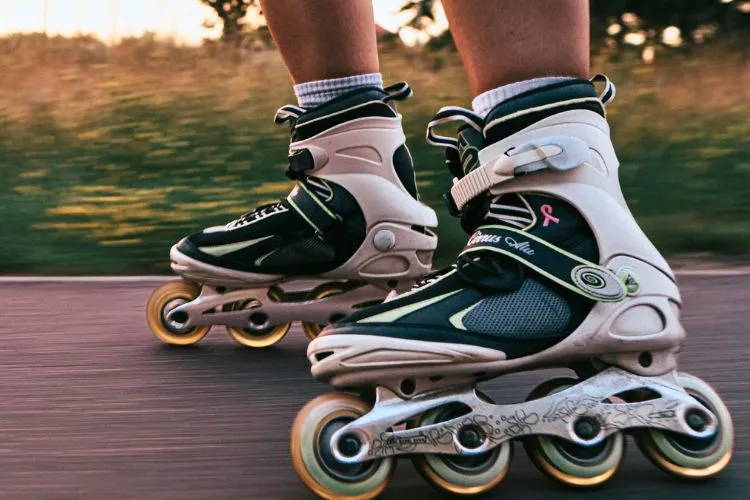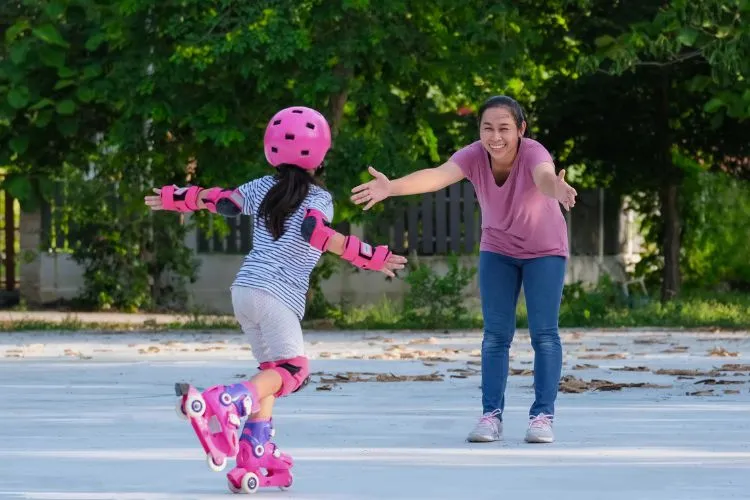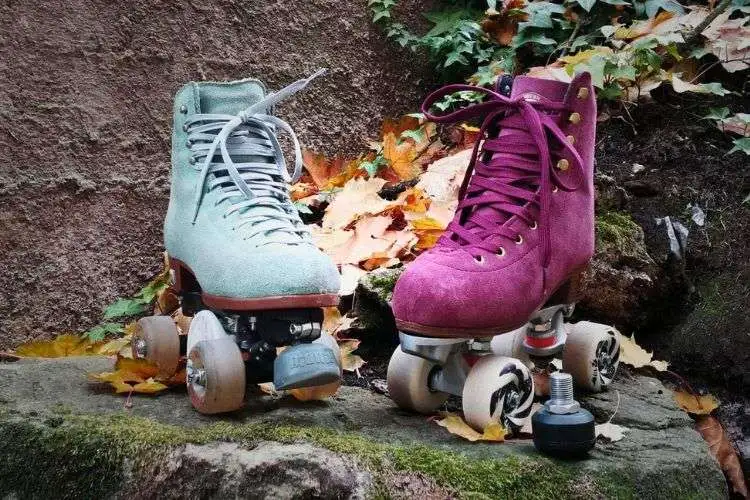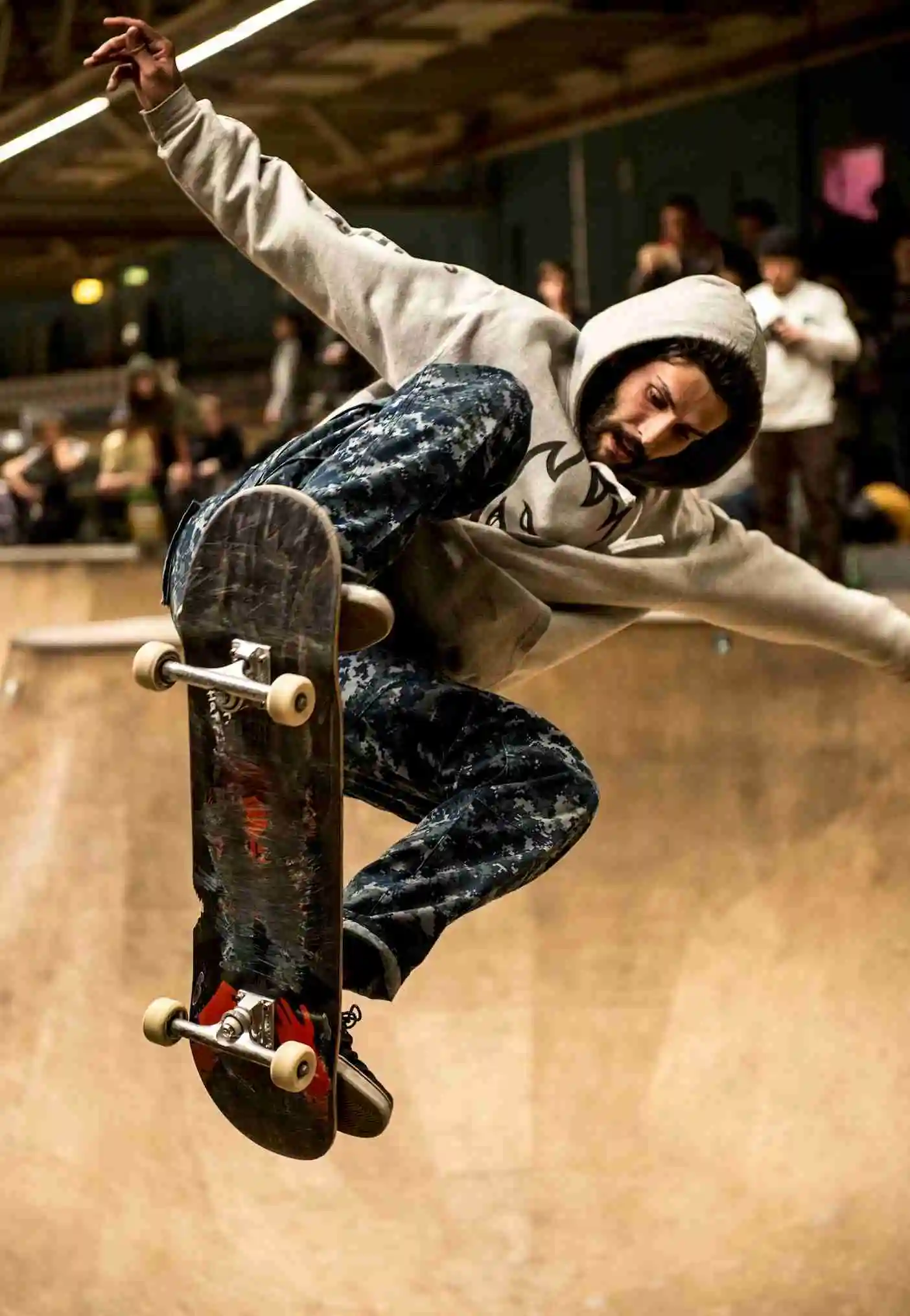Mastering the art of stopping is essential for anyone who straps on a pair of rollerblades. Whether you’re gliding through a park or navigating city streets, the ability to halt safely and swiftly is crucial.
This guide delves into how to stop on rollerblades, offering insights for rollerbladers of all levels.

Understanding Rollerblade Braking Basics
Every rollerblade comes equipped with a brake pad, typically found on the heel of the right skate, although some skaters may adjust it to the left.
This pad is the primary stopping tool for beginners. Familiarizing yourself with your specific rollerblade model is important, as braking components may vary.
Basic Stopping Techniques
The Heel Stop is the most straightforward method for beginners. It involves gently pressing the brake pad against the ground until you come to a halt. The key here is to apply steady pressure; too much force may cause you to lose balance, while too little might not stop you in time.
The T-Stop offers an alternative, especially for those skates without a dedicated brake pad. By dragging one skate perpendicular behind you, friction slows you down. This technique demands balance and the strength to maintain pressure on the back skate.
Meanwhile, the Plow Stop uses both skates to create friction and slow your motion. By widening your stance and angling your toes inward, you press down and outwards. This is effective at higher speeds but requires good knee strength and flexibility.

Advanced Stopping Techniques
For those seeking more challenge, the Power Slide and Hockey Stop present themselves as advanced options. The Power Slide involves a quick 90-degree turn of one skate, followed by a shift in weight to slide to a stop. It’s a highly effective emergency stop but demands agility and confidence.
The Hockey Stop, on the other hand, incorporates both feet in a rapid sideways slide. It mimics the stopping technique used in ice hockey and is best suited for experienced skaters looking for a powerful halt.
Stopping on Different Surfaces
Different surfaces affect how your skates will respond when you attempt to stop. Asphalt offers a rough texture that provides more friction, while concrete can be smoother and may require more force to halt.
Indoor surfaces, like wooden floors, often offer the most control and least resistance. Adapting your stopping technique to the surface’s traction and hardness is vital for effective stopping.
Safety Gear and Precautions
No guide would be complete without a nod to safety. Proper gear, including helmets, knee pads, and wrist guards, are essential.
Moreover, maintaining your equipment, especially the brake pad, ensures optimal performance. Regular checks for wear and proper adjustment can prevent accidents.
Practicing Stopping Techniques
Begin in a safe, flat area free from obstacles. Gradually increase the complexity and intensity of your practice sessions. Consistency is key. Over time, muscle memory will improve your reaction times and control, making stopping second nature.
Common Mistakes to Avoid
Many beginners press too hard on the brake or distribute their weight unevenly, leading to falls. Keeping the knee of your braking leg slightly bent helps maintain balance. Avoid locking your knees or leaning too far back, as this can also lead to loss of control.
Adjusting Your Brake Pad for Optimal Performance
Adjusting your brake pad is crucial for tailoring your rollerblades to your personal stopping style and ensuring optimal performance. Most brake pads are adjustable through a screw mechanism located at the rear or bottom of the skate.

To adjust the height, simply loosen the screw, slide the brake pad to your desired height, and then retighten. A lower pad offers more immediate contact and easier stopping, ideal for beginners.
For more experienced skaters seeking a challenge and smoother glide, a higher setting requires more deliberate effort to engage. Regularly check the screw for tightness to maintain your preferred adjustment.
Adjust your brake pad sensitivity before long rides or when you notice changes in your stopping efficiency. This simple tweak can significantly enhance your skating experience, making stops safer and more controlled.
Recognizing When to Replace Your Brake Pad
Recognizing the right time to replace your rollerblade brake pad is essential for maintaining safety and stopping power. Signs of significant wear include a noticeable thinning of the pad, uneven wear patterns, or the pad becoming hard and less flexible.
Many brake pads feature wear lines or indicators; once these marks are reached, it’s time for a replacement. To replace the brake pad, you’ll typically require an Allen key or specific tool provided by the manufacturer.
Unscrew the mounting bolt that holds the pad in place, remove the worn pad, align the new pad correctly, and then screw it back securely. Regularly inspecting and timely replacing your brake pad ensures consistent performance and safety during your rollerblading sessions.
You may also find useful: 3 Wheel vs 4 Wheel Rollerblades
Frequently Asked Questions (FAQs)
What is the safest way to stop on rollerblades for beginners?
The Heel Stop is generally considered the safest and easiest technique for beginners. It uses the built-in brake pad and requires minimal balance and technique.
How do I stop on rollerblades without brakes?
The T-Stop or Plow Stop are effective methods for skaters without a brake pad. Both require practice to master balance and technique.
Is it normal for the brake pad to wear down?
Yes, with regular use, the brake pad will wear down. Its lifespan varies based on how often it’s used and the surfaces you skate on. Regular inspection and replacement when necessary are important.
Can stopping techniques differ for children and adults?
While the techniques themselves remain the same, children may need more practice and guidance to master them due to differences in balance and coordination.
What should I do if I start to fall while attempting to stop?
Try to control your fall by bending your knees and aiming to land on padded areas of your body. Wearing protective gear, like wrist guards and knee pads, can minimize injury.
Conclusion
Rollerblading is not just about moving forward; knowing how to stop is equally important. By mastering different stopping techniques, you ensure your safety and the safety of those around you. Remember, practice is essential. With time and dedication, you can enjoy the thrill of rollerblading with confidence.
This comprehensive guide has walked you through the essentials of stopping on rollerblades, covering everything from basic to advanced techniques. With practice and the right approach, you can level up your rollerblading skills, ensuring every outing is both fun and safe.

Matthew James is a passionate skater who wanted to create a platform to share his love for skating with others. With a vision to create a vibrant community of skaters, he aims to provide a space where skaters of all levels can connect, learn, and grow together.
